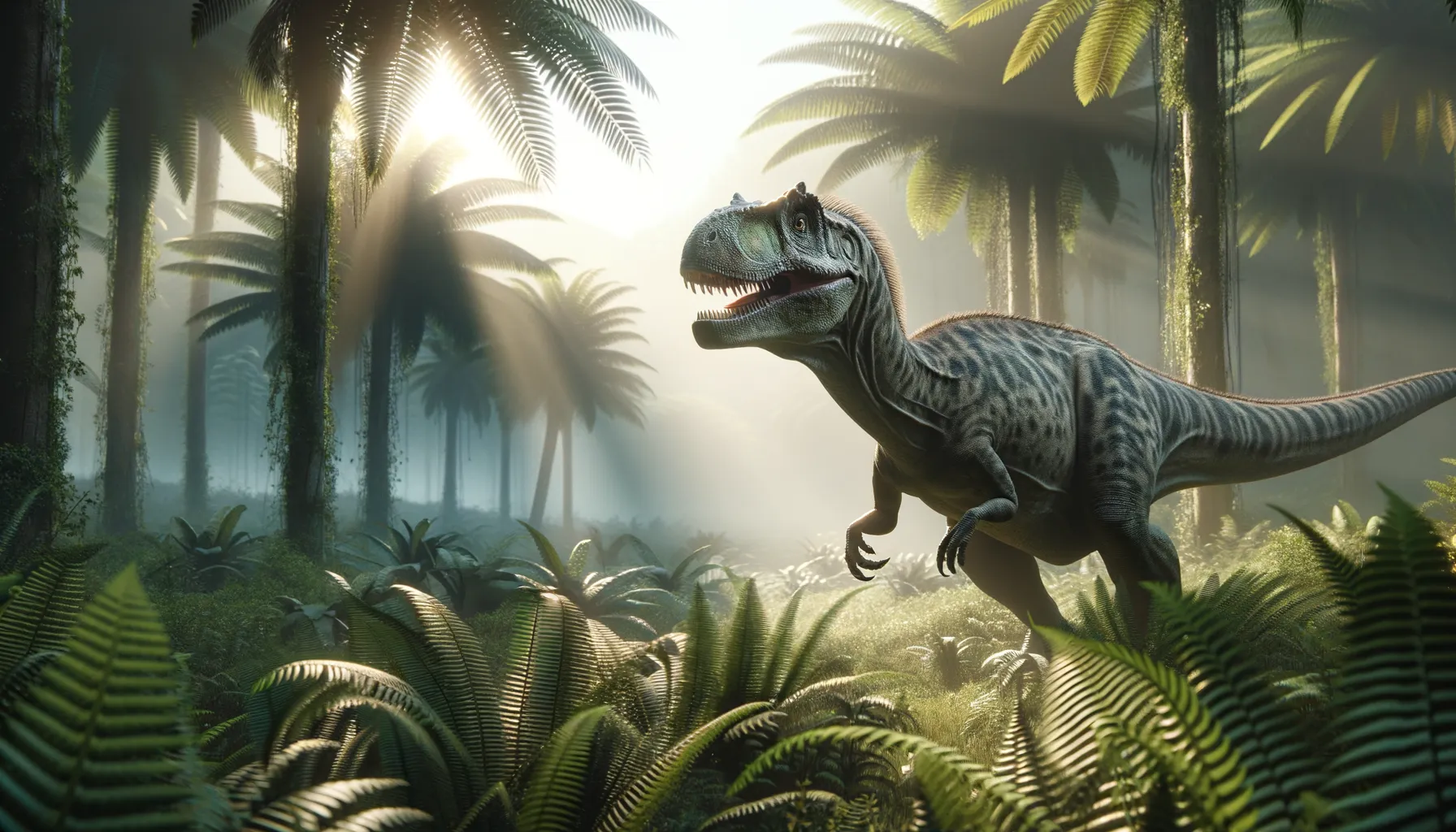
Ningyuansaurus
A small plant-loving theropod surprise!
Period
Cretaceous
Length
About 1.5 meters in total length.
Height
Approximately 0.7 meters tall at the hips.
Weight
Estimated to weigh around 20 to 25 kg.
Ningyuansaurus was a small theropod dinosaur known for its herbivorous diet during the Cretaceous period. Discovered in China, this dinosaur had unique anatomical features that suggested a plant-based diet, setting it apart from many of its carnivorous theropod relatives. Its small size and specialized teeth adapted it to a life of foraging for ferns and small plants. Fossil finds provide insights into the diversity of dinosaur diets and ecological roles.
Diet
Ningyuansaurus primarily consumed plants, unlike many other theropod dinosaurs. Its teeth were adapted to slice through fibrous plant material, making it a dedicated herbivore.
Hunting
Although its diet was plant-based, Ningyuansaurus likely foraged for food in dense foliage. There is no evidence to suggest it hunted other animals, instead relying on its environment for sustenance.
Environmental challenges
Living during the Cretaceous period, Ningyuansaurus would have faced predators larger in size. It might have had to use its small stature to navigate through dense vegetation quickly. Changes in climate and food availability could also have posed challenges.
Speed
Likely slow due to its small size and herbivorous nature.
Lifespan
Potentially lived several decades, like other small theropods.
First discovery
Discovered in 2012 in Northeastern China.
Fun Facts
- Ningyuansaurus was a small dinosaur that lived during the Early Cretaceous period, roughly 130 million years ago.
- It was discovered in northeastern China, in the famous Yixian Formation, which is known for its well-preserved fossils.
- Ningyuansaurus is part of the theropod group but had a more herbivorous diet, which is unusual for theropods traditionally known as carnivores.
- This dinosaur had feather-like structures, suggesting it may have been covered in a primitive form of feathers.
- The name 'Ningyuansaurus' was inspired by Ningyuan County, the location where the fossil was found.
- Its discovery provides valuable insights into the evolution of feathered dinosaurs and the dietary diversity of theropods.
- Ningyuansaurus helps paleontologists understand how small theropods adapted to different environments during the Cretaceous period.
Growth and Development
Ningyuansaurus likely grew relatively quickly to reduce the risk from predators. Given its small adult size, it might have reached maturity faster than larger dinosaurs. The development was probably supported by an abundant supply of vegetation.
Habitat
It inhabited lush, forested regions of Cretaceous China. The environment provided a rich supply of plant life necessary for its herbivorous diet. Seasonal changes might have affected plant availability, influencing its feeding patterns.
Interaction with other species
Ningyuansaurus probably coexisted with other small herbivores and omnivores. It had to be wary of carnivorous theropods which might have preyed upon it. Competition for similar food resources may have occurred with other herbivores.
Natural lifespan
Its natural lifespan was likely a few decades.
Reproduction
It likely laid eggs, typical of theropods, nesting in secure areas. Parental care might have been involved, with adults possibly guarding the nests or young. Reproductive strategies ensured the survival of offspring in a perilous environment.
Social behaviour
Ningyuansaurus might have lived solitarily or in small groups. Group living could have provided safety in numbers, reducing predation risks. Social interactions would have been important during mating seasons.
Fossil locations
Fossils were primarily discovered in the Liaoning Province of China. These findings contribute to the understanding of dinosaur diversity in the Cretaceous of Asia. The region is known for yielding exceptionally preserved fossils.
